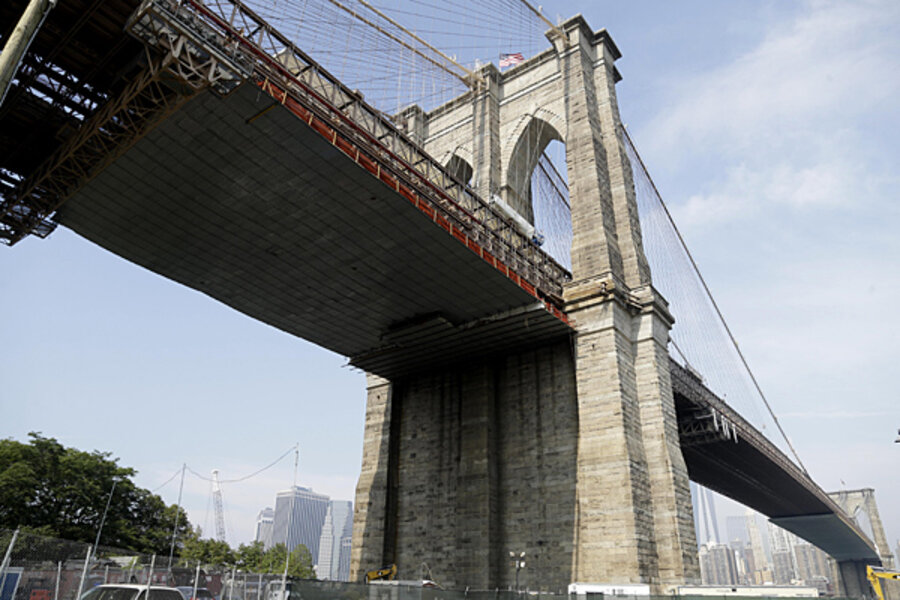US bridges need $3 trillion in repairs, study finds
Loading...
To some of us, road trips are among life's great pleasures. Ambling down a scenic byway, a full can of Red Bull/Diet Coke/chamomile tea in our hand/cupholder/lap, the wind in our hair/eyes/bald spot: these are the things we live for.
But although the view from our perch behind the wheel seems magnificent, we'd best not look down: according to a recent analysis, over ten percent of the bridges that we cross on our outings are deemed "structurally deficient" -- and some of them carry the ominous designation "fracture critical".
This news verifies what we've heard many, many times before. In 2009, for example, the American Society of Civil Engineers gave U.S. roads a grade of D-minus. Pew Research says that one-third of those roads are substandard, and a quarter of our bridges are falling apart. In fact, America's crumbling infrastructure could be one cause for the uptick in traffic fatalities we saw in 2012.
The latest report stems from an analysis of data found in the National Bridge Inventory (yes, it's a thing). Of the 607,380 bridges included in that inventory, 20,808 are judged to be "fracture critical", meaning that they have no structural redundancy. If just one component on a fracture-critical bridge fails, it puts the bridge at risk of immediate collapse.
But wait, there's more: of those 20,808 fracture-critical bridges, 7,795 are also "structurally deficient", meaning that at least one major element on those bridges is in poor or deteriorated condition. (Examples include such well-traveled stretches as Washington, D.C.'s Frederick Douglass Memorial Bridge and New York City's Brooklyn Bridge.)
An additional 57,810 bridges carry just the "structurally deficient" title, though at least they have some backup features that could prevent a sudden collapse.
In all, that means that 78,618 bridges across the U.S. are in serious trouble. In other words, 13 percent of bridges in America are failing, and hundreds more roll onto the list each year.
Forget the structures that need a bit of touch-up here and there: how much will it take to bring these iffy bridges up to snuff? A mere $3.6 trillion by the year 2020 ought to do it. Considering how quickly and efficiently Congress passes infrastructure legislation, that ought to be a piece of cake, right?







